It’s deja vu all over again, with Foton relaunching in the Australian market after a failed attempt a few years ago.
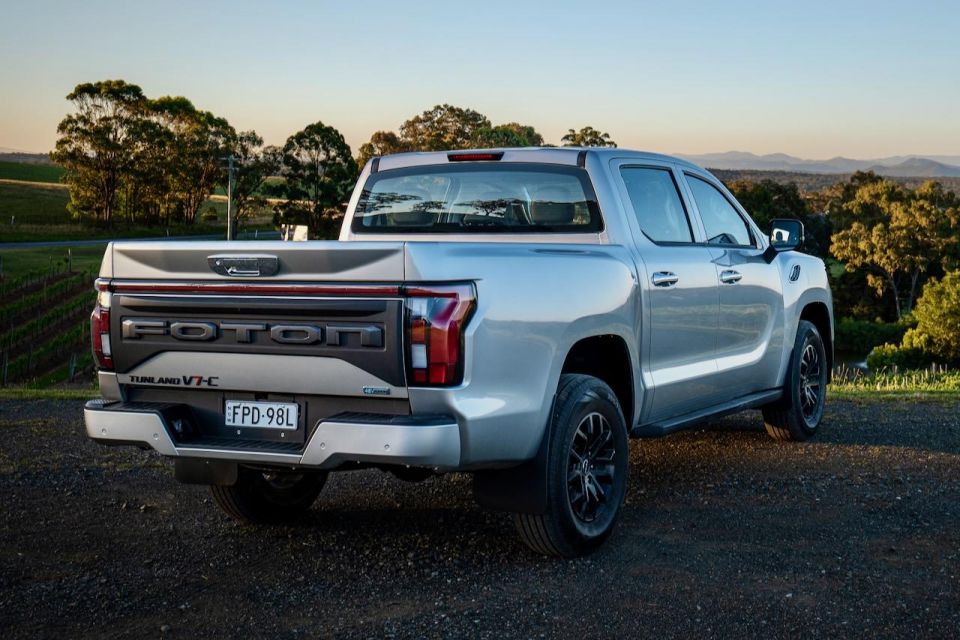
While I never had the pleasure, the previous Foton Tunland ute – launched in 2012 – is remembered with mixed feelings, depending on who you ask. The vehicle was certainly built to a price, but still won many over, no doubt thanks to its Cummins-sourced diesel engine.
Regardless, the Foton Tunland was quietly the butt of industry jokes after it arrived. And less quietly after it left.
Now, with new car brands flooding the market and Aussies seemingly more open to the idea of a Chinese ute, Foton has returned – with commercial vehicle buyers firmly in its sights.
Before you scoff, it’s worth saying up front that Foton isn’t making some kind of half-hearted attempt at re-entry. It’s a whole new era for the company, and these vehicles bear no resemblance to previous generations.
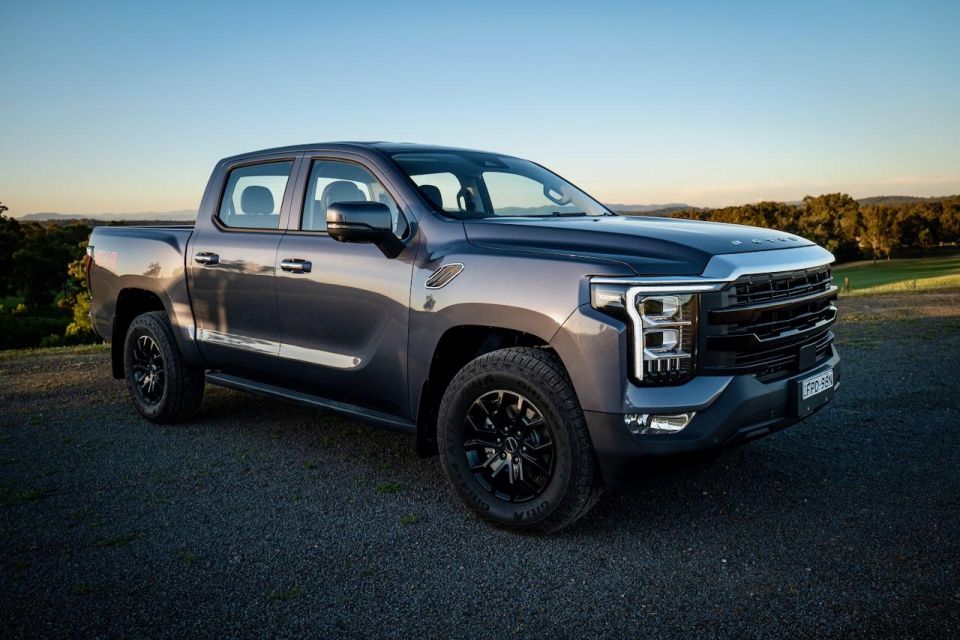
Foton utes are also now imported by Inchcape Automotive, which is the local distributor for Peugeot, Deepal, and Subaru. So it’s safe to say they have a good understanding of the Australian market and what buyers expect.
The all-new Tunland has launched with two main dual-cab 4×4 pickup variants, the V7 and the V9, and while they share most things in common, there are a few key differences you need to know.
Unusually, the V7 and V9 have distinctly different front-end designs, with the V7 appearing like it could have rolled off a Ford F-Series production line, while the V9 has taken more than a touch of inspiration from the Ram 1500 pickup.
The V9 also sports black bolt-on wheel-arches, ala Holden Torana SLR5000.
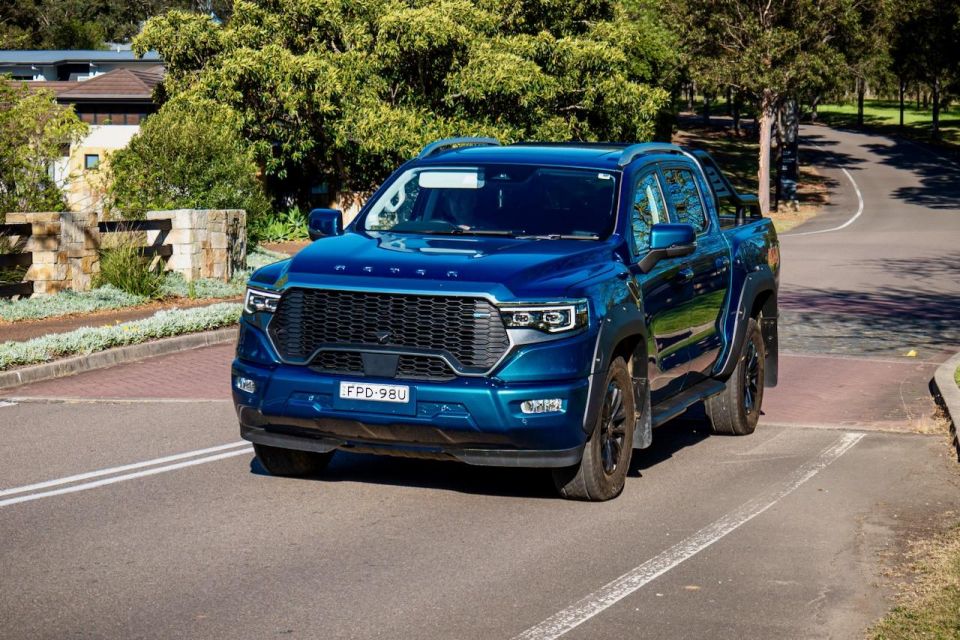
Despite the V7 appearing at a glance like the larger vehicle – to my eyes, at least – both variants are based on the very same dual-cab ute body, and share the same tail-lights and interior.
The Tunland is also larger than a typical dual-cab ute, splitting the difference between something like a Ford Ranger dual-cab and a full-size US pickup like the Ford F-150.
But here’s the key: the V7 has leaf-spring rear suspension designed to handle slightly higher payloads, while the V9 has a multi-link coil-sprung arrangement out back, providing better ride and handling.
So, V7 is work, V9 is play, according to Foton.
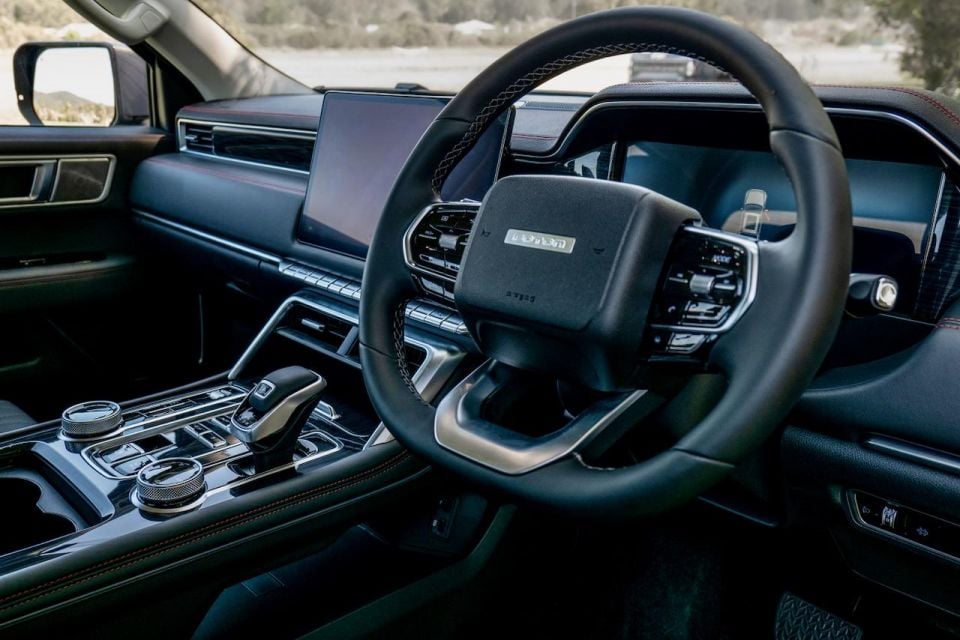
Then there are three grades beyond that: the V7-C – in both 4×2 and 4×4 – the V9-L 4×4, and the range-topping V9-S 4×4.
We spent about 24 hours testing the new Tunland range across a wide variety of conditions – from city driving, traffic jams, highways, suburban driving, country areas, winding mountain roads, gravel roads, and on real four-wheel drive tracks in the Victorian High Country.
Hold onto your hats, folks, because this may just be the biggest surprise of 2025.
How much does the Foton Tunland cost?
The 2026 Foton Tunland range is priced between $39,990 and $49,990 before on-road costs, with a total of four model grades available from launch.
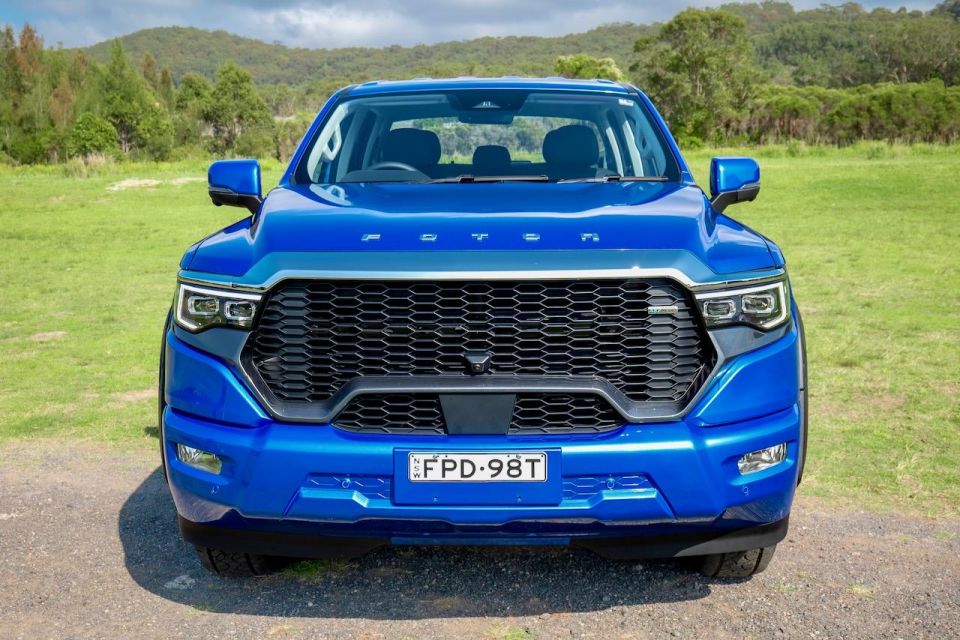
| Model | Price before on-road costs |
|---|---|
| 2026 Foton Tunland V7-C 4×2 | $39,990 |
| 2026 Foton Tunland V7-C 4×4 | $42,990 |
| 2026 Foton Tunland V9-L 4×4 | $45,990 |
| 2026 Foton Tunland V9-S 4×4 | $49,990 |
To see how the Foton Tunland lines up against the competition, check out ourcomparison tool
Let us help you find your new car
Buy your new car without the stress. It’s fast, simple and completely free.
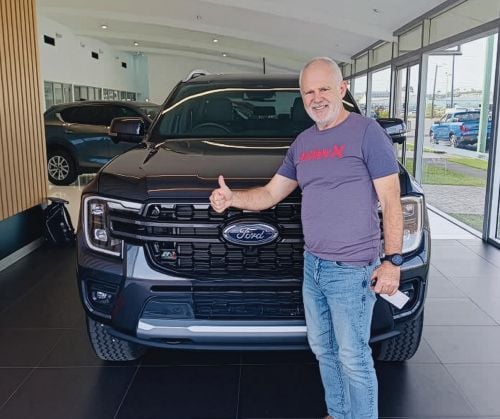
Great service from Travis and team, second time I have used this business would not hesitate to recommend them to anyone
Craig C.
Purchased a Ford Ranger in Sunshine Coast, QLD
CarExpert helped Craig save thousands on his Ford Ranger, now let us save you on your next new car.
What is the Foton Tunland like on the inside?
Some automakers at the value end of the spectrum have cottoned onto the fact they can make interiors that look impressive in photos, but can cheapen out on materials and build quality in the hope that buyers won’t notice until it’s too late.
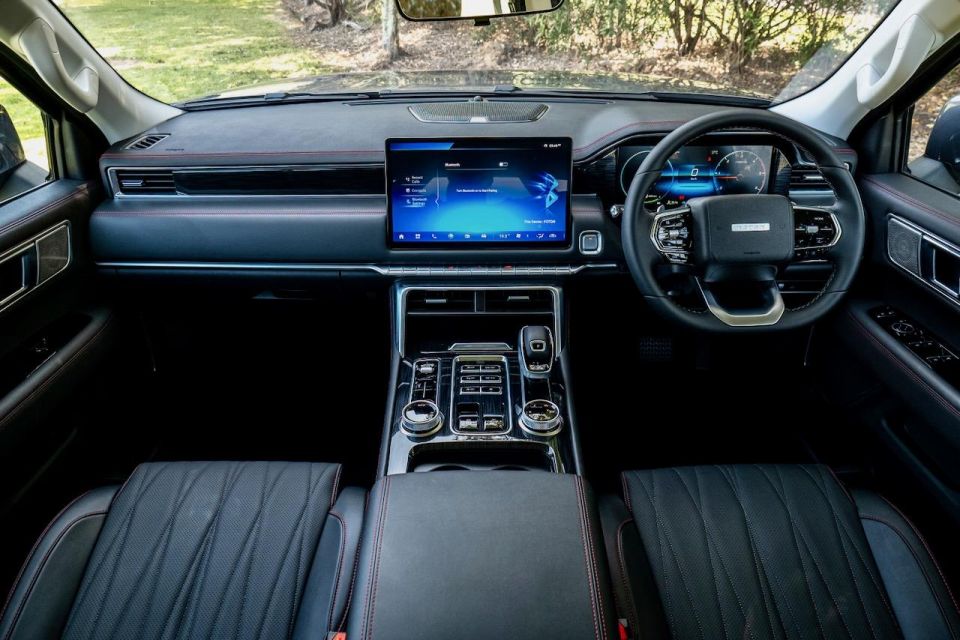
That isn’t the case with the Foton Tunland.
This is a very impressive cabin, not only in terms of layout, but also in the materials used and the way it’s been built. This is a well screwed-together car, and I genuinely mean at any price point.
We’re talking about a faux-leather interior with contrast stitching, brushed aluminium, nice plastic trims, a decent multimedia screen with wireless Apple CarPlay, and plenty of buttons to quickly access what you need – and turn off what you don’t.
I found the ergonomics to be particularly good, taking just seconds to find my preferred seating and steering positions.
The larger size of the Tunland means tonnes of space to relax in up front, and plenty of room for two or three adults in the second row.
Not carrying passengers? Flip the 60/40-split rear bench seat up for a flat floor, and stick your 12-volt fridge in there for easy access.
Like the Tunland, my body proportions are also larger than most, and I found the front seats were more than accommodating.
Having said that, the front seats – manual in the V7, electric in the V9 – are a little on the firm side, with my passenger complaining their legs had fallen asleep after about an hour of riding shotgun. My ageing spine also appreciates a bit of extra lumbar support, which you only get in the V9-L and V9-S.
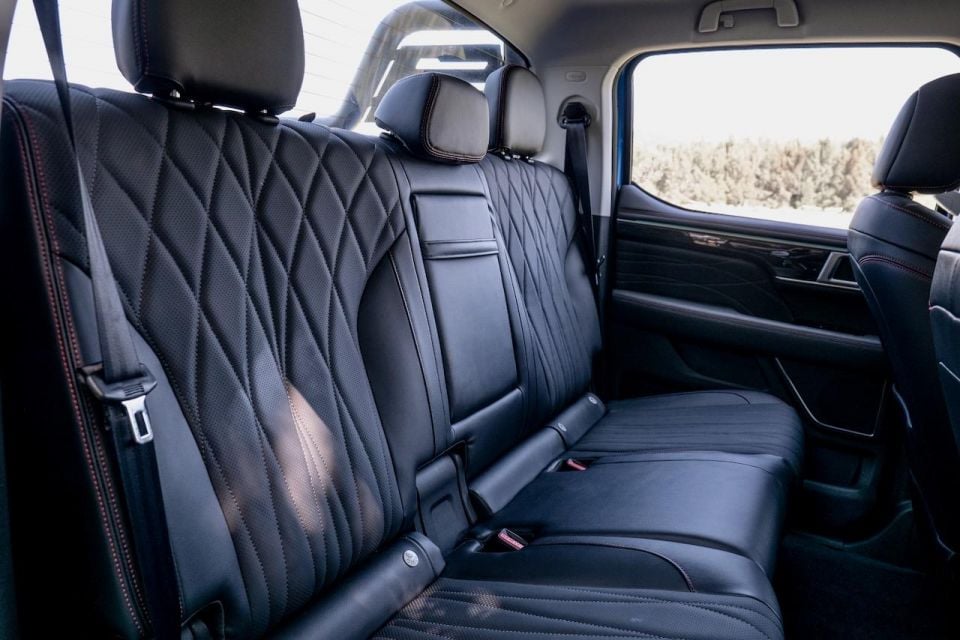
I wouldn’t go so far as saying these seats are uncomfortable, but there’s definitely scope for improvement.
Unfortunately, two of the V7s we drove had a minor rattle emanating from the driver’s door/window mechanism, sounding very much like a loose clip.
The steering wheel is just the right size, has a handsome design, and has plenty of shortcut buttons as well as paddle-shifters behind for manually changing gears on the fly.
Buyers only get dual-zone climate control, heated front seats, and a wireless smartphone charger from the V9-L and above.
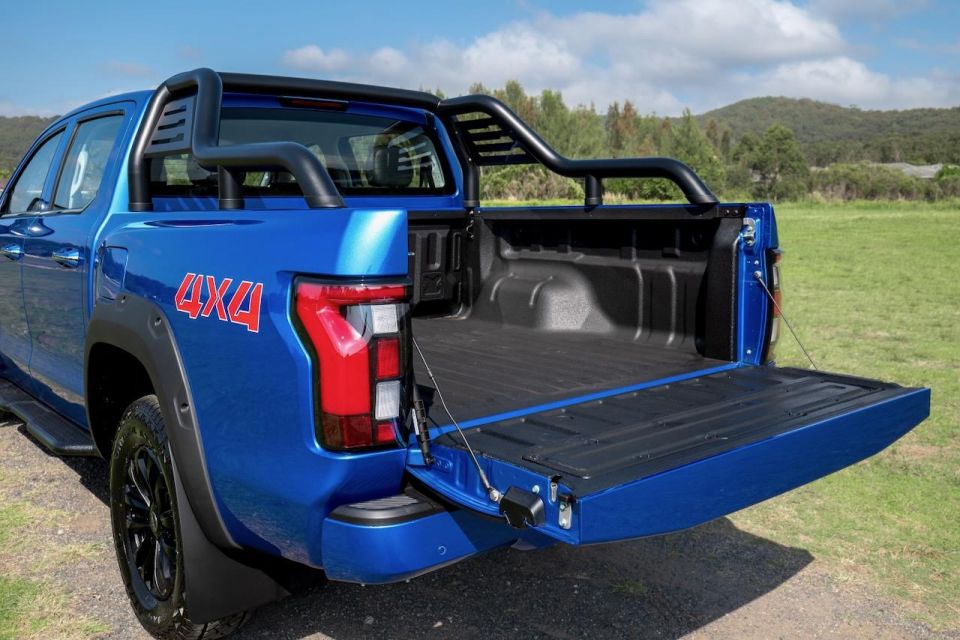
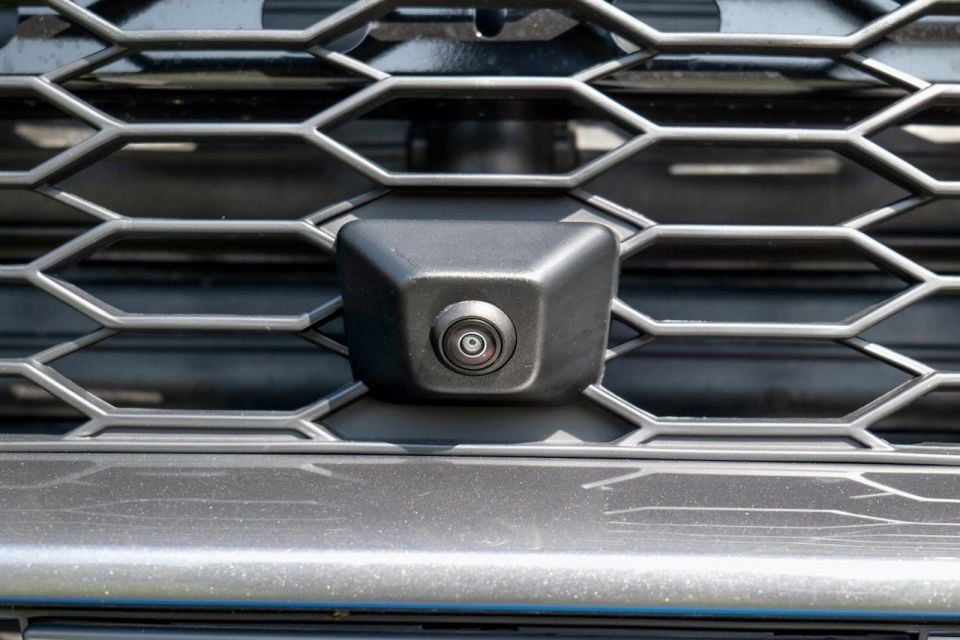
Those wanting ventilated front seats, heated rear seats (outboard), and a huge panoramic sunroof have to fork out for the range-topping V9-S. Then again, we’re still talking less than $50,000 for all the fruit.
The infotainment system, while reasonably intuitive, can sometimes take a minute or two to load up Apple CarPlay, and some of the virtual buttons – like those to select steering mode – require absolute precision before they register. Which means it’s basically impossible to use unless you’re driving on marble.
It was a little disappointing to discover there’s no DAB+ digital radio as standard, so young tradies will have to stream Triple M Country from their phones instead.
| Dimensions | Foton Tunland V7 | Foton Tunland V9 |
|---|---|---|
| Length | 5617mm | 5617mm |
| Width | 2000mm | 2090mm |
| Height | 1910mm | 1955mm |
| Wheelbase | 3355mm | 3355mm |
| Tub | 1577x1650x530mm | 1577x1650x530mm |
To see how the Foton Tunland lines up against the competition, check out ourcomparison tool
What’s under the bonnet?
All Tunland models are powered by the same 2.0-litre ‘Aucan’ turbo-diesel four-cylinder engine co-developed with Cummins – complete with 48-volt mild-hybrid technology, and mated to an eight-speed automatic transmission from ZF.
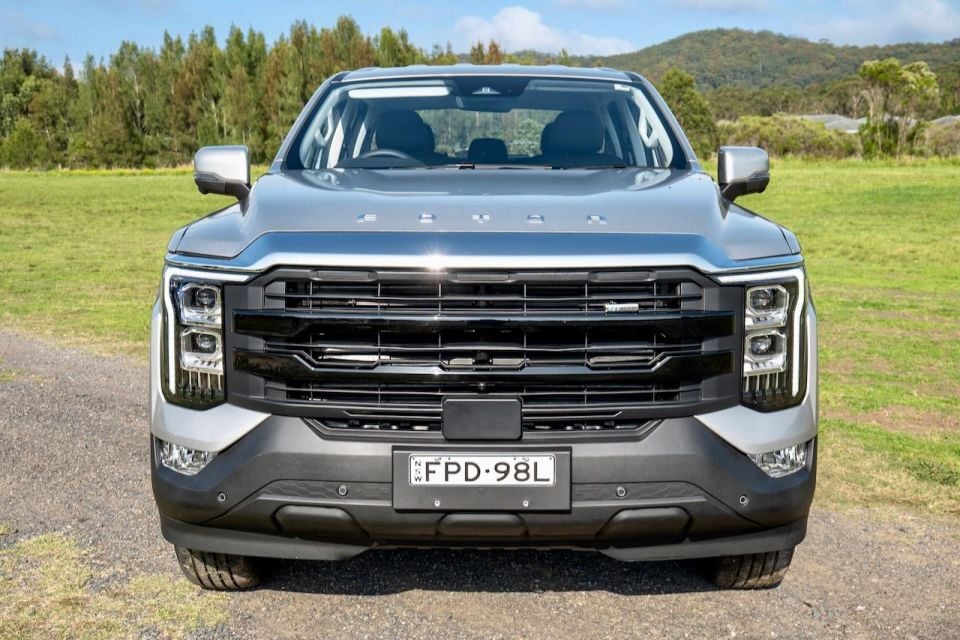
| Specifications | Foton Tunland |
|---|---|
| Engine | 2.0L turbo-diesel 4cyl with 48V mild-hybrid system |
| Power | 120kW @ 3600rpm |
| Torque | 450Nm @ 1500-2400rpm |
| Transmission | 8-speed auto |
| Drive type | Rear- or four-wheel drive |
| Fuel economy (claimed) | 8.0L/100km |
| CO2 emissions (claimed) | 211g/km |
| Fuel tank | 76L |
| Weight | 2190-2315kg |
| Payload | 995-1115kg |
| Braked towing capacity | 3500kg |
| Gross vehicle mass (GVM) | 3305-3335kg |
| Gross combination mass (GCM) | 6805-6835kg |
The brand says the Aucan engine has been tested for ‘B10’ durability to 500,000km – meaning 90 per cent of engines are expected to exceed that mileage.
To see how the Foton Tunland lines up against the competition, check out ourcomparison tool
How does the Foton Tunland drive?
Despite its larger size, the Tunland never came across as being too big, hard to park, or difficult to place on the road.
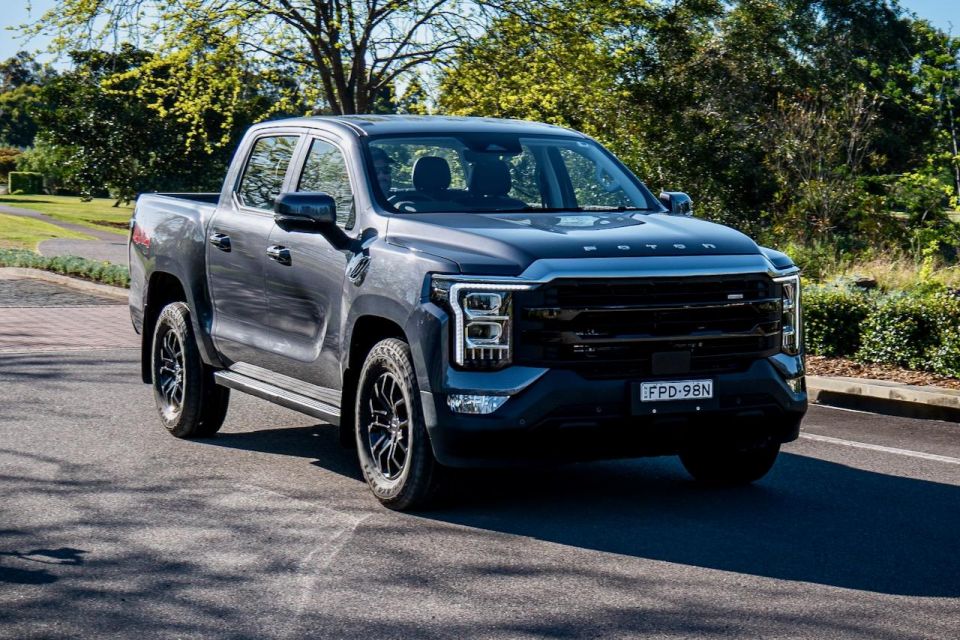
In fact, I’ve driven smaller dual-cab utes that feel more intimidating on the road than the Foton ever does.
While it’s not quite night and day, there is a noticeable difference between the suspension on the V7 and the V9.
We were lucky enough to sample the V7 both laden and unladen, and like most workhorse utes with leaf-sprung suspension, there’s a big improvement in comfort once there’s at least a few hundred kilos of weight in the back.
Empty, the V7 does have a harsher ride, picking up bigger bumps in the road. However, it’s never unbearable and is still pretty decent for what it is, likely helped by the longer wheelbase of the Tunland.
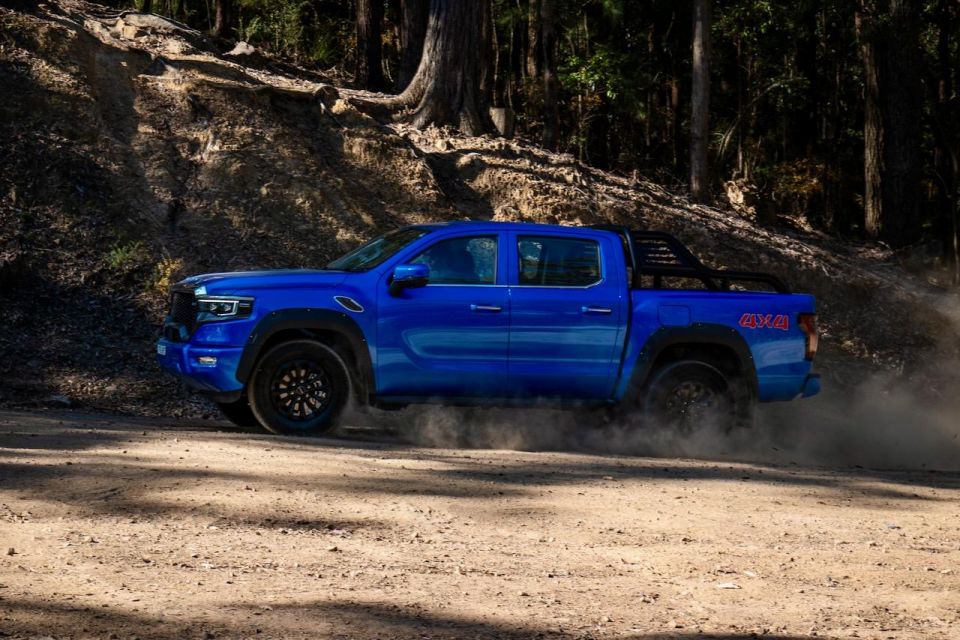
It’s a brave car company that launches a ute on the tight winding roads of the Black Spur and Reefton Spur – arguably the best driving roads near Melbourne – but the Tunland was surprisingly good around corners for its size, with its steering offering a great balance between weight and feedback.
Frankly, it was the steering that continually impressed me, each time I jumped back behind the wheel.
However, pushing an unladen V7 on the Black Spur – for science, you understand – uncovered approximately a dozen circumstances when the front suspension produced a loud clanging sound, almost as if the front springs were reseating after a tight corner under load.
Despite a few raised eyebrows, the Foton continued to perform well and nothing seemed broken.
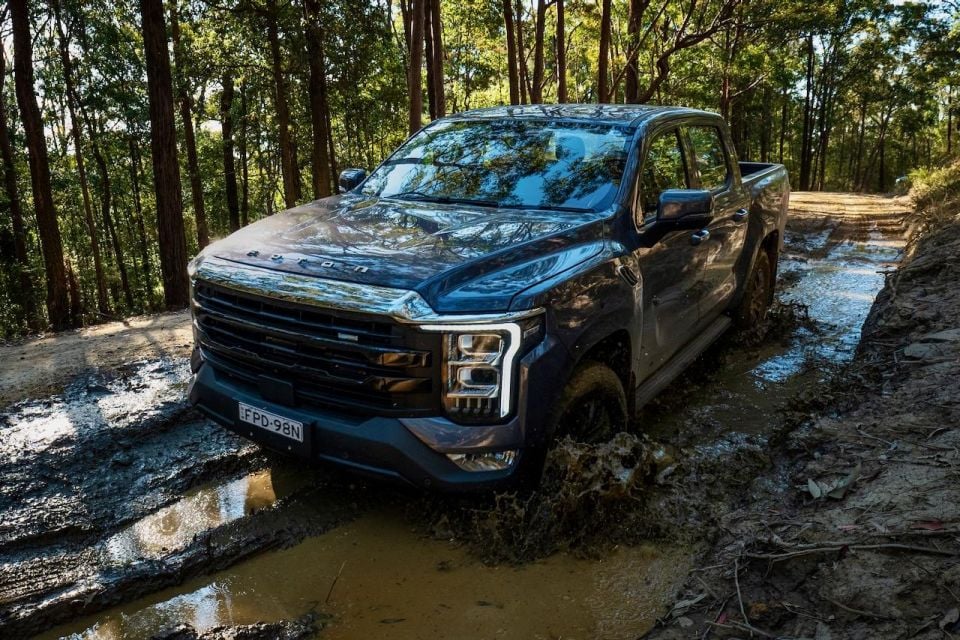
Trusted Reviews, Smarter Choices, Better Prices
Where expert car reviews meet expert car buying – CarExpert gives you trusted advice, personalised service and real savings on your next new car.
Step into the V9 and there is a marked difference in on-road comfort, thanks to the more sophisticated multi-link coil-spring rear suspension setup.
Foton describes it as offering SUV-levels of comfort, which is something close to the truth.
The car’s advanced driver-assistance systems (ADAS) seemed to work well, in so much as the car never annoyed me with beeping or flashing lights while I was driving.
All models come with the same 265/70R18 Giti 4×4 tyres, which provided a good amount of traction on road and off.
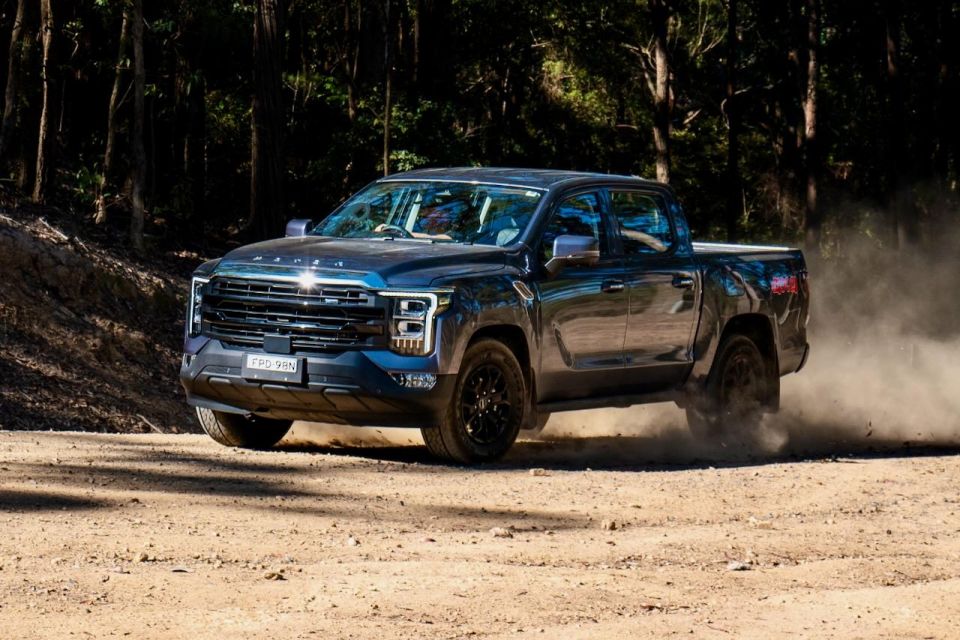
Off road, the Toton Funland showed strong potential, with the low-range gearbox – its selectable electronic 4×4 system being sourced from BorgWarner – allowing you to make the most of all 450Nm to pull the large ute up steep, slippery hills.
Hill descent control works well to get the big ute down the other side slowly and safely, while the paddle shifters allow the driver to change up several gears while remaining in low-range.
The Tunland’s 360-degree cameras came in useful while exploring bush tracks, and while the ‘transparent chassis’ feature isn’t quite as sophisticated as those from other brands, it does help you navigate around big rocks and through tight spaces.
This isn’t a comparison, to be sure, but having just stepped out of a Kia Tasman, I have to say the Foton Tunland delivers preferable on-road dynamics, and appears like it could match the Tasman off-road too.
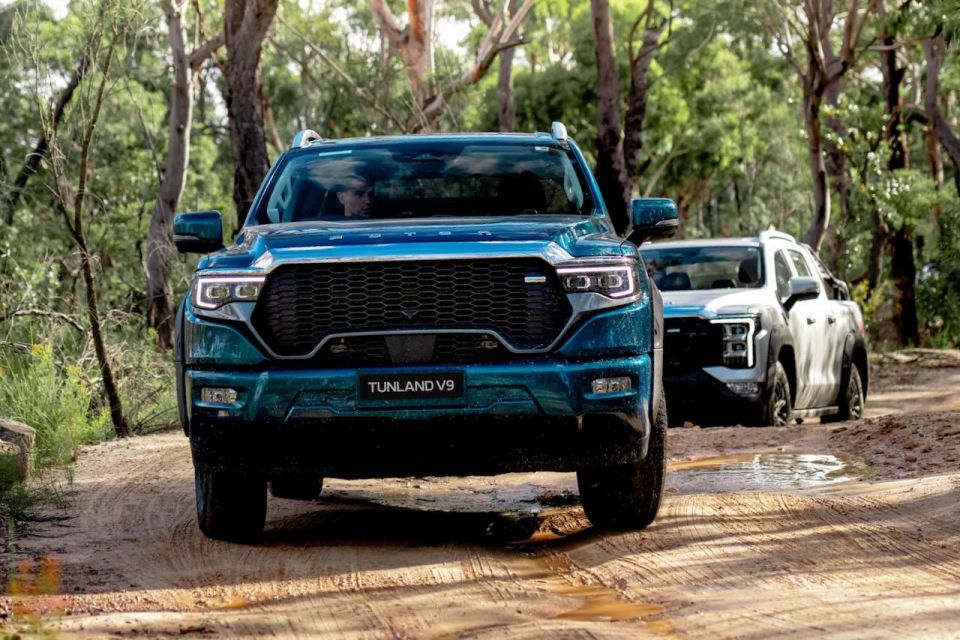
Blindfold anyone and put them behind the wheel (actually, don’t do that) and I promise you they will think they’re behind the wheel of far more expensive vehicle.
The engine isn’t a powerhouse, but there’s good performance for daily driving and light off-roading – but push the Foton like you’re in a Ranger Raptor and it simply runs out puff. Drive sensibly, though, and it’s perfectly adequate.
The ZF-sourced automatic was fantastic, and helped get the most from the turbo-diesel engine in a relaxed manner. In manual mode, it’s also possible to select a gear, and it won’t automatically upshift when the engine hits redline. Big tick.
| Off-road dimensions | Foton Tunland |
|---|---|
| Ground clearance | 240mm |
| Approach angle | 28 degrees |
| Departure angle | 26 degrees |
| Ramp breakover angle | 21 degrees |
| Wading depth | 700mm |
To see how the Foton Tunland lines up against the competition, check out ourcomparison tool
What do you get?
The Tunland range is very well equipped, with the entry-level V7-C 4×2 coming with most features needed for drivers in 2026, while the range-topping V9-S 4×4 adds extras often reserved for vehicles at a much higher price bracket.
2026 Foton Tunland V7-C 4×2 equipment highlights:
- Spray-in tub liner
- Highway Terrain tyres
- Eco, Standard, Sport drive modes
- Electronic parking brake
- Auto hold
- Automatic LED headlights
- Integrated dash cam
- 12.3-inch digital instrument cluster
- 14.6-inch touchscreen infotainment system
- 2 x front USB-A outlets
- 4-speaker sound system
- Single-zone air-conditioning
- 6-way manually adjustable driver’s seat
- 4-way manually adjustable passenger seat
The V7-C 4×4 adds:
- Four-wheel drive system
- Sand, Mud, Snow modes
- Locking rear differential
- All-terrain tyres
The V9-L 4×4 adds:
- Multi-link rear suspension
- ‘Premium’ side steps
- ‘Premium’ 18-inch wheel design
- Sports bar
- Lockable tray
- Heated, power-folding exterior mirrors
- Heated front seats
- 6-way power driver’s seat with 4-way lumbar
- 4-way power passenger seat
- Dual-zone climate control
- 6-speaker sound system
- 2x rear USB-A outlets
- 220V/300W power outlet
- Auto-dimming rear-view mirror
The V9-S 4×4 adds:
- Locking front differential
- Roof rails
- Rear privacy glass
- Panoramic sunroof
- Ventilated front seats
- Driver seat memory
- Heated outboard rear seats
- LED rear reading light
- Auto up/down for all power windows
To see how the Foton Tunland lines up against the competition, check out ourcomparison tool
Is the Foton Tunland safe?
The 2026 Foton Tunland has not been rated by the Australasian New Car Assessment Program (ANCAP) at the time of publication.
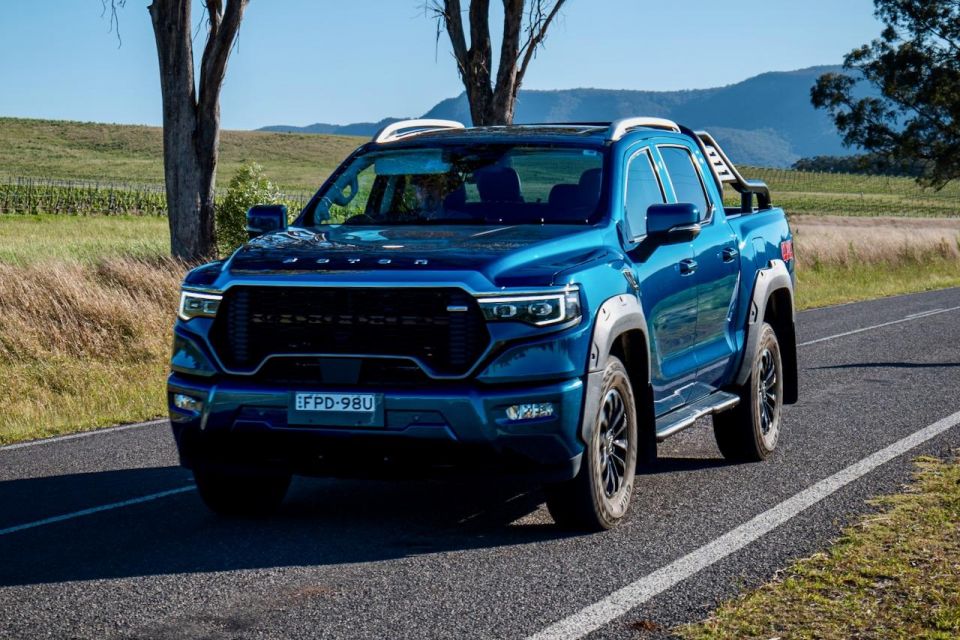
Standard safety equipment for the Foton Tunland range includes:
- Six airbags
- Adaptive cruise control
- Autonomous emergency braking
- Pedestrian and cyclist detection
- Blind-spot monitoring
- Lane-keep assist
- Lane centring
- Rear cross-traffic alert
- Surround-view camera
- Front and rear parking sensors
- Safe exit warning
- Traffic sign recognition
Foton Tunland V9-S 4×4 adds:
To see how the Foton Tunland lines up against the competition, check out ourcomparison tool
How much does the Foton Tunland cost to run?
The Tunland comes with Foton’s 7/7/7 aftersales program, which equates to a seven-year/unlimited-kilometre warranty, seven years of capped-price servicing, and seven years of roadside assistance.
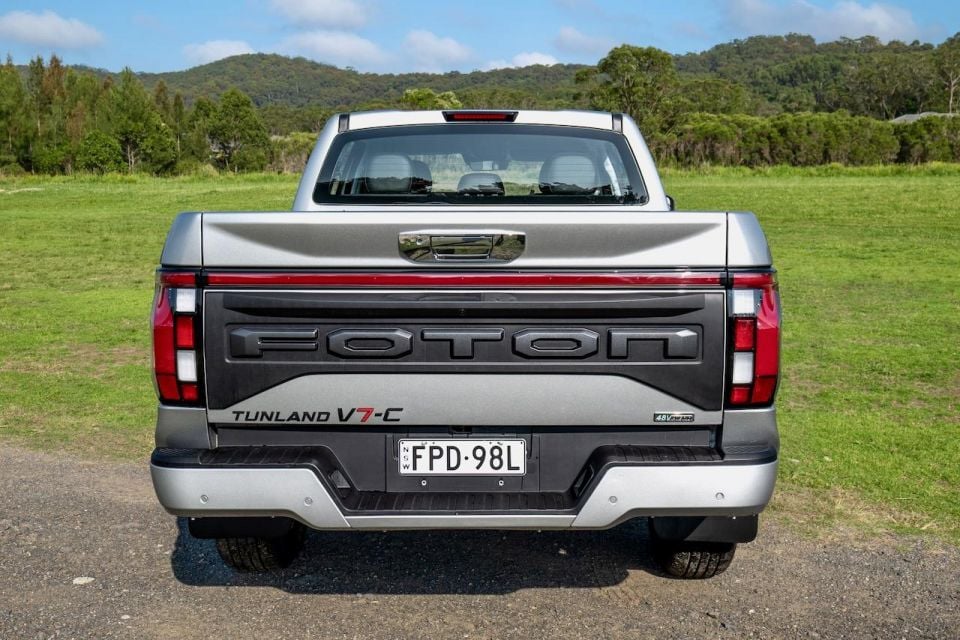
| Servicing and Warranty | MAKE MODEL VARIANT |
|---|---|
| Warranty | 7 years, unlimited kilometres |
| Roadside assistance | 7 years (subject to dealer servicing) |
| Service intervals | 15,000km, 12 months |
| Capped-price servicing | 7 years, 110,000km |
| Average annual service cost | $641.80 |
| Total capped-price service cost | $4492.59 |
With service intervals every 15,000km or 12 months (whichever comes first), the total cost of maintenance is $4492.59 over a seven-year period.
However, unlike some other capped-price service program, Foton has reserved the right to adjust pricing in the future.
To see how the Foton Tunland lines up against the competition, check out ourcomparison tool
CarExpert’s Take on the Foton Tunland
The 2026 Foton Tunland is a hugely impressive dual-cab ute – even at double the price.
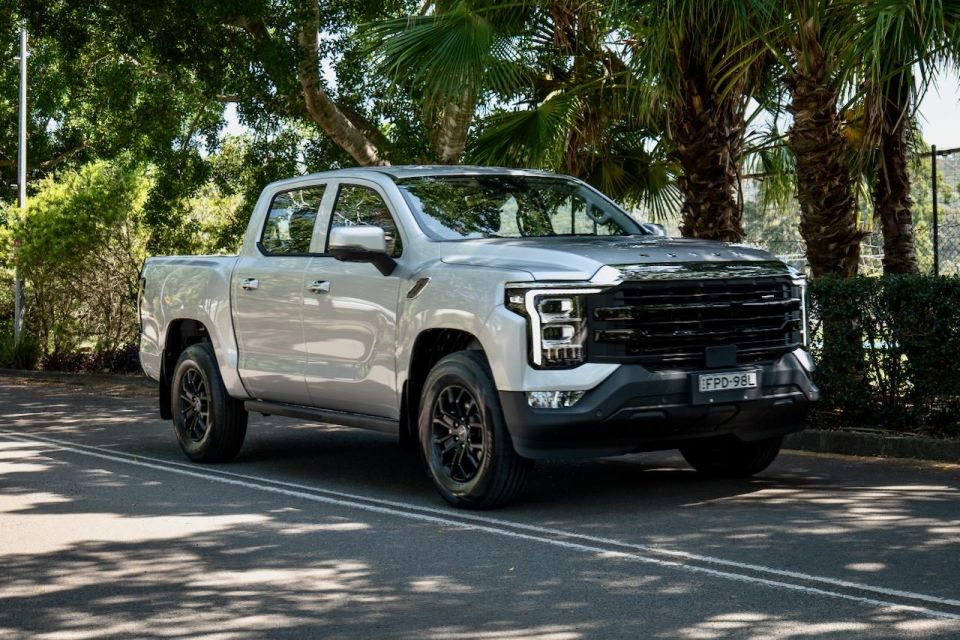
Despite the wide array of environments we sampled, our time with the Tunland range was limited to just 24 hours, so there may be foibles or faults that come to the surface after we get one in for a more extensive review.
But initial impressions suggest the Foton Tunland could very well be the best dual-cab 4×4 ute on the market for less than $50,000 – finally dethroning the KGM Musso from South Korea. Time will tell.
For those who need the extra seats of a dual-cab but don’t need four-wheel drive, the V7-C 4×2 is super impressive for less than $40,000. Just fit a steel canopy to the tub to get some preload into the rear suspension, and enjoy.
For those that do venture off road, the Tunland V7-C 4×4 is exceptional value for $42,990 before on-road costs, and feels like the sweet spot in the range.
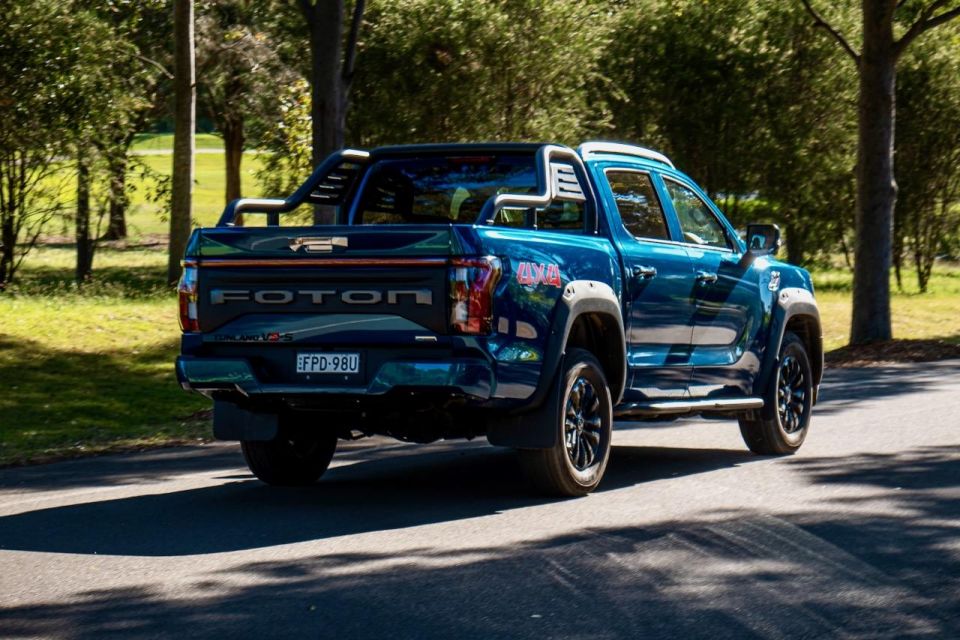
Young tradies who have finished their apprenticeship and want to upgrade their wheels should take note.
Really though, any of the four grades comes across as a bargain.
If it wasn’t obvious at this point, the 2026 Foton Tunland makes a big impression. The interior, driving dynamics, and value-for-money are next-level, to the point where the model could put a serious dent in the sales of established players like the Mitsubishi Triton, GWM Cannon, LDV T60, and even the forthcoming Nissan Navara.
It’s an exciting time, particularly for value ute buyers, with the market now offering several strong choices – and the all-new Foton Tunland promises to be one of the most exciting.
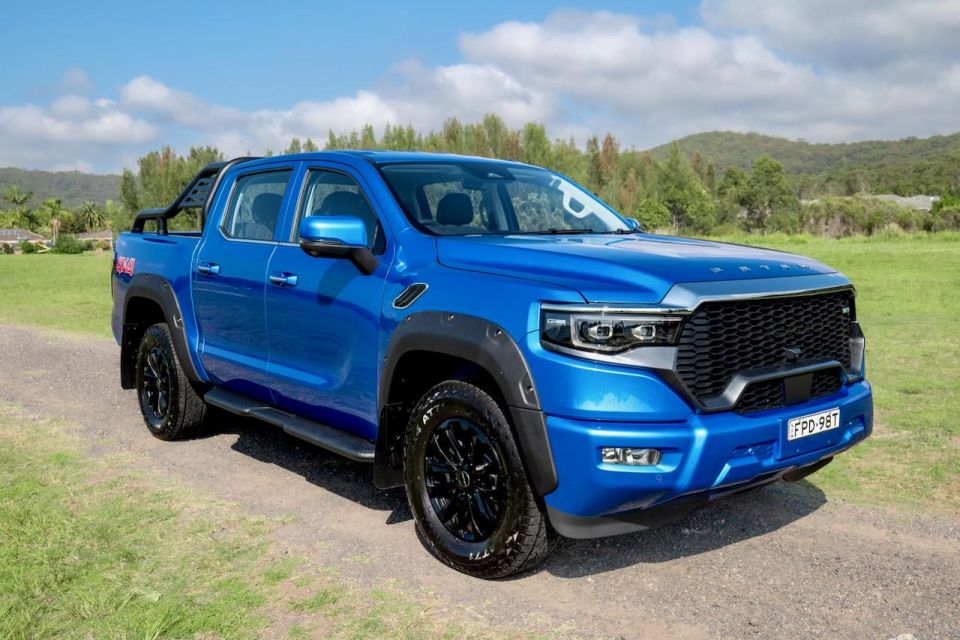
Click the images for the full gallery
CarExpert can save you thousands on a new Foton Tunland. Clickhereto get a great deal


